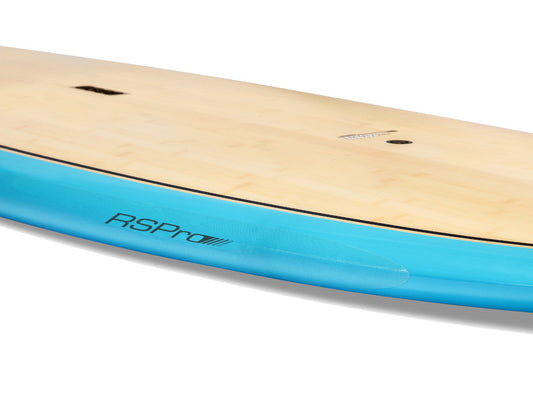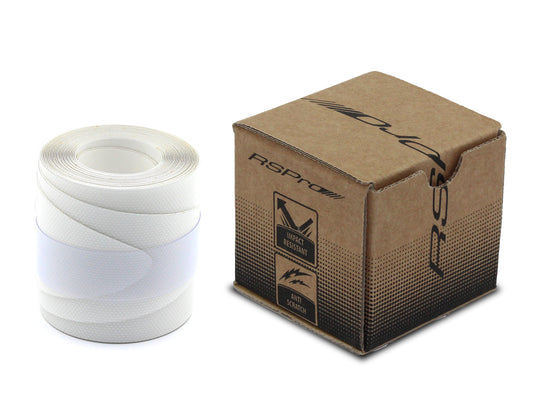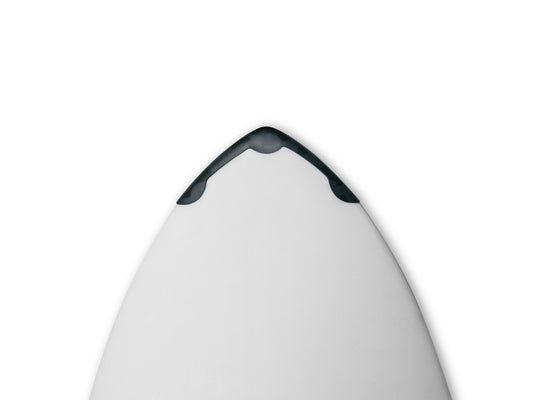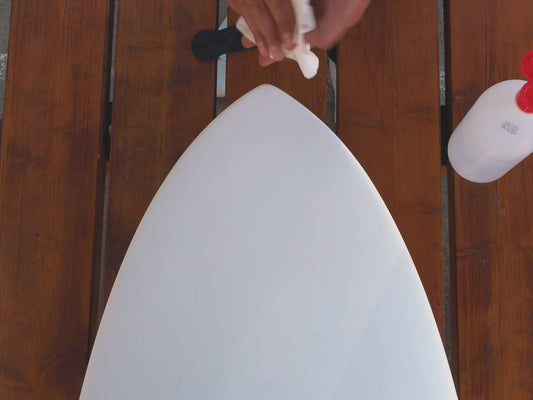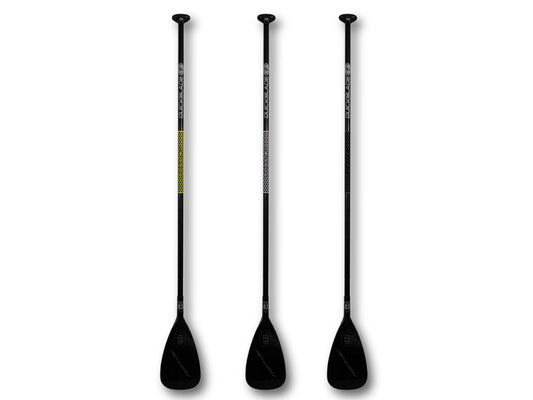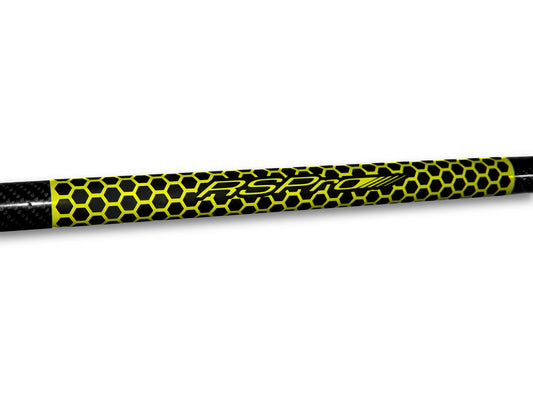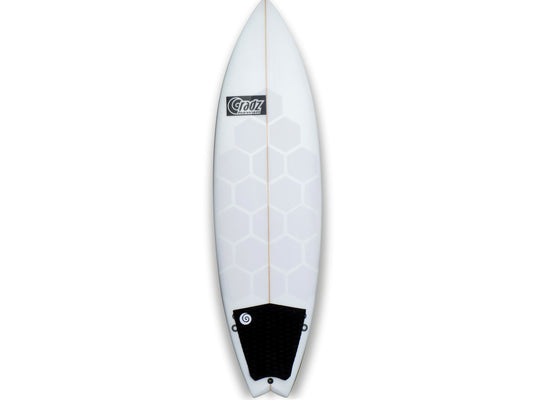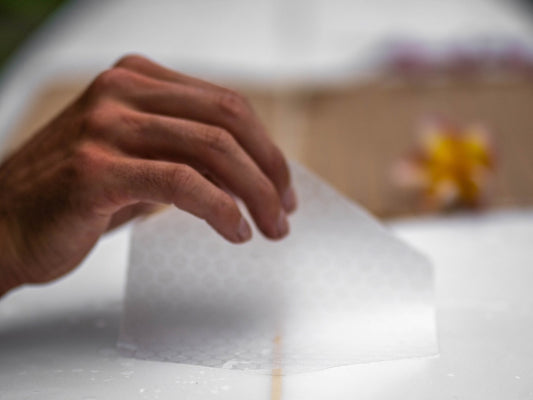Evolving Sustainability: The Story Behind RSPro's Innovative Cork Installation Template
Carles CarreraShare
As a watersports enthusiast and someone deeply immersed in the world of surfing gear, there’s nothing more exciting than sharing the innovations that make our sports more enjoyable and eco-friendly. Today, I'm thrilled to delve into a story of innovation that marries performance with sustainability – a core mission at RSPro.
Starting with a Simple Idea
It all began with the introduction of the HexaTraction system, a groundbreaking alternative to traditional surf wax. This product not only enhanced the surfing experience but also stood as a testament to RSPro's commitment to environmental stewardship. To aid in the application of these hexagonal grips, we initially included a star-shaped, black plastic template. While effective, this choice soon struck a discordant note with our sustainability ethos. After all, what’s the point of pushing eco-friendly products if our accessories don’t follow suit?

A Shift to Sustainability
In a move to align our tools with our principles, we transitioned to a cardboard template. This solution, embedded right in the packaging, seemed perfect initially. However, we recommend installing HexaTraction with a wet method – using water to prevent air bubbles – and soon feedback from our community highlighted a flaw. Cardboard and water don’t mix well, and many found the template soggy and unusable midway through installation.

Innovation Through Feedback
Feedback is a gift, and for us, it was also a catalyst for innovation. We needed a material that was not only sustainable but durable enough to handle wet conditions. Then, an idea sparked – why not use cork scraps? Cork, after all, is biodegradable, renewable, and perfectly in line with our eco-conscious approach. More importantly, cork could withstand water without falling apart.
The Perfect Solution: Cork
The switch to a cork template was a game-changer. Not only did it handle the wet installation method beautifully, but it also reinforced our commitment to sustainability. The cork scraps, which were byproducts of other production processes, found new life as part of our HexaTraction kits. This move not only reduced waste but also provided our users with a tool that was both practical and environmentally friendly.

Why This Matters
In the world of surfing, every little bit of innovation counts not just for improving performance but for protecting our oceans. By choosing materials that are sustainable, we’re not just crafting better products; we’re advocating for a healthier planet. This commitment to sustainability is echoed in every product we design, and the cork template is just one example of how we can make a significant impact.
Conclusion
This journey from a plastic to a cork installation template is more than just a tale of product development. It’s a narrative about listening to our users, respecting our environment, and never settling for the easy way out. It’s a reminder that innovation can and should be sustainable.
For anyone passionate about watersports, or just starting out, RSPro’s commitment to quality and sustainability is something you can truly feel good about supporting. As we continue to innovate, we do so with both the surfer and the sea in mind. Dive into the world of RSPro, where performance meets planet – and where your gear is as committed to the ocean as you are.

In Summary RSPro has evolved its installation template from plastic to cardboard and finally to cork, balancing sustainability with functionality. This evolution not only enhances the application process for HexaTraction but also aligns perfectly with our commitment to preserving the environments we love. Dive deeper into our innovations, and join us in making a difference, one wave at a time.

